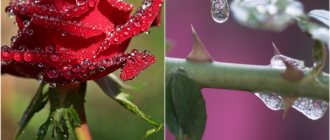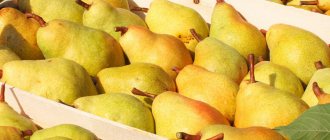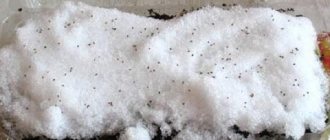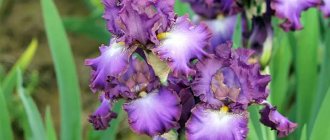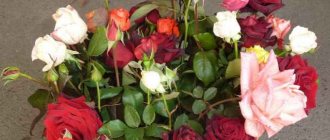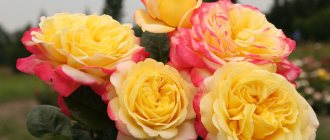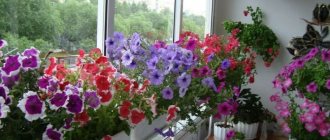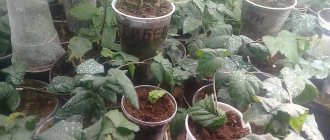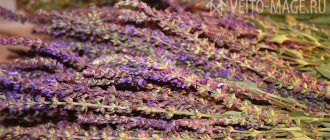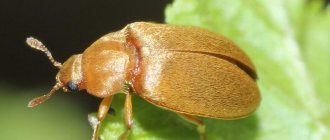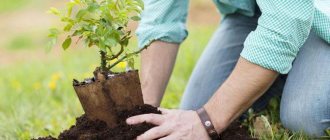September is the best time to buy seedlings. But sometimes it is not possible to plant plants in the fall and you have to postpone the procedure until spring. There is nothing wrong with this, because the seedlings will wait until they are planted if you send them over the winter correctly.
The ideal time for planting seedlings is from mid-September to mid-October. Winter-hardy varieties of apple trees, pears, conifers, currants, raspberries, and gooseberries planted during this period will successfully take root, and next year they will grow faster than crops planted in the spring.
But bad weather, poor winter hardiness of the selected variety and simply lack of time sometimes force summer residents to skip autumn planting. In such a situation, it is important to slow down the growth of the seedling and put it into a dormant state in order to preserve the plant’s strength until the new summer season. Let's figure out how to do this correctly for different cultures.
Types of seedlings
The fastest process of adaptation to new conditions after planting on a site occurs in seedlings that were grown in containers with soil substrate. Their root system is well developed, making further growth faster. Such plants are planted using the transshipment method, directly with a lump of “native” soil. This method protects the roots from damage.
Planting material from a nursery that has been grown outdoors is often sold in brightly colored packaging. Its root system receives the necessary substances from a substrate formed by a briquette and packaged in polyethylene. In this form, seedlings should be stored in accordance with the manufacturer’s instructions until planting in the spring. The main advantage of such plants is the presence of a closed root system that will not dry out in several months.
Preservation of seedlings before planting - possible problems
Did you know that self-respecting summer residents begin to worry about the future dacha season in the fall. It is on the eve of the end of the current dacha season and the onset of a new one that gardeners are browsing nursery websites in an effort to get on sale and buy rose seedlings in the Moscow region at a profit, as well as large-sized plants and shrubs.
And you probably don’t know that in Europe the planting season begins much earlier than here. Accordingly, with this deadline, various promotions will start on European sites; the Lyubimy Sad nursery, working closely with European manufacturers, is ready to offer you a variety of seedlings both in late autumn and early spring. The only problem is that it’s frosty outside, and a scattering of seedlings in containers has already appeared in your house. There is only one problem: how to save the purchased seedlings?
In fact, the solution to this problem is complex, because the following factors must be taken into account:
- condition of the root part of the planting material;
- condition of buds on cuttings;
- the time period before the temperature that is comfortable for planting occurs;
- storage possibilities (apartment, country house).
The sale of seedlings in Moscow provides for their sale in two versions - with an open and closed root system. The greatest difficulty in preservation is shown by seedlings with an open root system.
Attention: Seedlings in boxes cannot be considered planting material with a closed root system. The presence of an earthen lump is only an appearance. The cuttings did not grow in this land; the presence of a coma is only necessary for safe transportation.
Knowing how to properly store seedlings, you will save on purchasing planting material by making purchases in advance.
Which seedlings to choose
The choice of planting material is made based on its condition and appearance.
- The seedling must be strong and healthy, without damage or peeling of the bark, signs of rotting and white plaque.
- In the cold season, the buds should be “dormant”. In this case, the tree should not be dry. An overdried plant can be recognized by its wrinkled bark. At the same time, if you slightly bend the twig, you will hear a cracking sound (they become brittle).
- The place where the fruit tree is grafted (merging the rootstock with the scion) should have a characteristic scar.
- The presence of awakened buds in plants is acceptable if they are purchased immediately before planting in open ground.
So, a healthy seedling has a high degree of elasticity, uniform color, and clearly visible buds.
It is impossible to store seedlings that have begun to flow sap without planting them in the soil.
It is very important that the structure of the seedlings is proportional. That is, the size of the root system was normal in relation to the above-ground part of the tree.
The roots should be inspected first, even when they are packed in film with nutrient soil. It is best to cut off their ends and examine them carefully (they should not be blackened or dried out).
How to store seedlings at home in an apartment - three options to choose from
If you live in the city and it is not possible to get to your dacha in the next month, but you have already purchased planting material, all that remains is to choose the option that is most convenient for preserving the seedlings.
There are only three such options for those living in an apartment:
- Fridge. This household item ensures the safety of cuttings with dormant buds. Seedlings can be stored in the refrigerator for up to 8 weeks, after wrapping them in paper or polyethylene. Once every five days, the seedlings must be sprinkled with water from a spray bottle. The storage temperature is 3 degrees, but even if it is a few degrees higher, there is no need to worry.
- Balcony. Here you can store cuttings with already grown shoots. Containers provide better preservation of the root system. After purchase, seedlings must be carefully inspected, the top shoots removed, the roots straightened and the cuttings placed in a container. If you don't have a container, you can use plastic water containers. It is recommended to keep the container in a darkened corner, with mandatory monitoring of the night air temperature. Proper care is based only on timely hydration.
- We transplant it into a pot and store it indoors on the floor or windowsill. This option also exists, but it is recognized by agronomists as the worst. Transplanting into a flower pot leads to underdevelopment of the root system. Such seedlings then do not take root well in the garden, often get sick and produce a small number of shoots.
Preparation for storage
Seedlings purchased long before planting should be stored after their preliminary preparation.
- Damaged, dried or diseased parts of the roots must be removed using pruning shears. Roots that are too long are shortened to normal sizes. After this, the cut areas are treated with brilliant green or sprinkled with charcoal powder.
- If a plant shows signs of mold damage, there is no point in continuing to store it. It will no longer be possible to stop the development of bacteria, and by the time of planting the small tree will be completely affected by mold.
- Those who purchase plants in other cities and receive them by mail should immediately check the rhizomes of the seedlings. Quite often the roots turn out to be dry. Therefore, before storing seedlings until planting, their roots are wrapped in a damp cloth for several days.
Trees with open roots require additional antiseptic treatment with foundation or copper sulfate. For 10 liters of water 1 tbsp. spoon and 30 g respectively).
Seedlings purchased in March: how to preserve them before planting
The question of how to preserve seedlings purchased in March before planting is relevant for many gardeners. Often seedlings are purchased back in January or February, but they begin to be planted in central Russia only at the end of April or even the beginning of June. How to save planting material?
Bookmark for storage
Visual inspection, removal of excess
Before storing material, it will need to be checked. The quality of the seedling in the future directly depends on this, so you should not ignore this event. It happens that the buds are already growing, but have not reached two centimeters. If this is the situation, then the seedlings can be safely stored in a fairly cold and dark place.
Advice! When, during inspection, dried or damaged shoots are visible that show signs of fungal infection, such shoots are cut off with pruning shears. It is important to remove them on time, otherwise, during storage of the seedling, the problem may spread to the entire plant.
You will also need to be sure to trim off too long shoots with a sharp and clean pruning shears. It is recommended to treat the areas of the environment for disinfection with brilliant green. The root system also needs to be checked. Long, broken roots should be shortened or removed. It happens that the roots are dry, then they need to be kept in a damp cloth for some time.
If rose seedlings are stored for storage, the place where the grafting was carried out must be checked additionally. As a rule, it is located high and does not have a protective paraffin plug. This place needs to be wrapped in polyethylene.
Bookmark for storage
Now the prepared seedlings need to be wrapped in clean plastic film. It is important that the film is thin. Several holes are made in it. Here you need to take into account that the tightness must be good, otherwise the seedlings may become unusable during the downtime period. Be sure to additionally wrap everything on top with newspaper and secure with rubber bands.
But even this is not all, now you will need to put the seedlings in clean and dry plastic containers. It is in this form that they are sent for storage in a cool room.
Storage Compliance
Next in the matter of how to preserve seedlings purchased in March, before planting, you will need to comply with the correct humidity and temperature conditions. Here you will have to try and monitor these indicators all those months when the seedlings are stored.
Small seedlings can be safely stored even on the bottom shelf of the refrigerator. If possible, they can be moved to a dark cellar. It is important that the ambient temperature is around zero. At this pace. the plants will go into a period of natural hibernation and will be able to favorably endure the waiting period before planting.
Important! There is no need to disturb the planting material, open the film or create other disturbances for a quiet winter. Once every thirty days you can check the condition of your kidneys, but do this extremely carefully.
If the seedlings are large
This could be currants, apple trees, various decorative shrubs. It’s clear that you definitely won’t be able to put them in the refrigerator. All you need is a basement where the temperature is between zero and plus two degrees. Plants can be placed in boxes with sand, but the root system should not even be wrapped.
As for the branches, just sprinkle them with sand. But the sand must be moist so that the buds do not have time to dry out completely during storage. Sometimes you need to save herbaceous perennials before planting. This is also done in the basement, and the plants are laid out in boxes with sand.
Advice! All situations described on how to preserve seedlings purchased in March before planting are suitable for seedlings whose buds have not yet developed and have not yet woken up. If the plant is already in the awakening period, then the seedlings need to be planted and grown until transplanted into open ground like an ordinary houseplant. It is important here that the pace. the air was not too hot, and also that the seedlings had enough light.
Separately about apple trees
In early spring, many people buy apple tree seedlings. Many gardeners advise storing them on the site, digging them in. If there is still snow, the seedlings can be placed under the snow. In urban conditions, you will need to place the seedlings in a substrate with soil and keep them on the balcony. Another good way is to wrap the roots with a damp cloth and a plastic bag and send them to a cool place.
These are the ways to preserve seedlings purchased in March until planting. These are proven methods that only work if you follow each step described. We wish you a good gardening season!
This could be currants, apple trees, various decorative shrubs. It’s clear that you definitely won’t be able to put them in the refrigerator. All you need is a basement where the temperature is between zero and plus two degrees. Plants can be placed in boxes with sand, but the root system should not even be wrapped.
Long-term storage
How to store seedlings before planting, if spring is still far away? The best place for storage is the basement, where the temperature is kept down to -2°C and the humidity does not exceed 80%. In such conditions, seedlings are perfectly stored, which allows you to start spring planting on time. Seedlings are placed along the wall in one or two rows. The roots are sprinkled with wet peat, sand or sawdust. For better preservation of seedlings, sawdust should be steamed in boiling water and cooled. This preventative measure allows you to maintain a healthy root system. Each seedling must be labeled with the name of the variety.
Long-term storage of seedlings should take place in the cellar
During winter conservation, planting material requires care:
- When the covering layer of sawdust, sand or peat dries out, it must be moistened.
- If air humidity drops, measures are taken to increase it. To do this, you can hang a wet cloth. If the humidity level is sufficient, condensation will accumulate on the ceiling. Then the fabric needs to be removed.
- When the covering layer settles, the roots are exposed and can dry out. It is necessary to add sawdust, peat or sand so that the layer is 30 cm above the root collar.
- In warm winters, the basement is periodically ventilated. Otherwise, the humidity there will increase, which will lead to rotting of the planting material. Ventilation holes are required.
- Seedlings must be protected from rodents by placing traps and mousetraps. They scatter the bait and put down the branches of coniferous trees. You can just let the cats go.
You can place the seedlings in plastic bags of 10 pieces, pour 0.5 liters of water into them and tie them tightly. Store in a basement or cellar.
Rose seedlings are dealt with differently. They are placed obliquely in a box with wet sand so that it covers the root system well. They are also stored in the basement, monitoring the moisture content of the sand. The protective wax is not removed - it additionally protects the plant. Seedlings of herbaceous perennials are also stored in the sand.
Saplings on the balcony
Small plants can be stored planted in pots directly in the apartment or on a glazed balcony. They should be placed on a bright windowsill, preferably on the north side, or on a balcony, if there is no severe frost.
2. With the help of 2 - 3 of these lamps, turned on 12 hours a day and aimed at your peonies and irises, you will preserve the flowers planted in pots until the threat of spring frosts has passed. Then plant the flowers in the ground.
How to preserve conifer seedlings until spring
Coniferous plants can be preserved in two ways: in a trench in the garden or in a cellar. The first option is preferable, because wintering in a cellar does not always go well. Make a trench, as we described above, and place seedlings in it, you can directly in containers if the root system is closed. Pour peat on top of the trench and cover the mound with film, and the green part of the plants with any non-woven material.
If the soil is already frozen and it is difficult to dig a trench, winterize conifers in a cellar, basement or garage. Place each seedling in a box and cover it with peat. To protect the roots, cover the boxes with something warm: old blankets, unwanted clothing, etc. There is no need to cover the above-ground part.
Drying out the soil is dangerous for conifers, so moisten the soil regularly before spring arrives.
The grafting site must be strong and healthy. For some plants (eg roses) it is important that it is covered with paraffin or grafting tape.
Under what conditions should it be stored?
Each seedling (container) usually has a label indicating the name and variety of the plant. Often, information related to the conditions of its storage before disembarkation is also indicated there.
The storage temperature of seedlings should be in the range from 0°C to +2°C. This allows the plants to remain dormant and tolerate the wait for planting normally. If there is a cellar or basement, seedlings can be stored there.
When plants are dormant, there is no need to disturb them again. It is enough to check the condition of the kidneys several times during the winter. At the same time, for winter storage you can make a trench covered with pine branches to prevent mice and other rodents.
How to preserve seedlings purchased at the wrong time: advice from Yulia Minyaeva
In February, the shelves of gardening stores are filled with bright boxes with all kinds of seedlings. There are fruit bushes, trees, and many ornamental plants. How can you not buy something for your yard when there is such a great choice?
Boxes with all kinds of seedlings
However, having become the owners of the treasured seedlings at the end of winter, we are faced with a problem. All these plants cannot be immediately planted in their permanent places; for the time being they must be preserved. I purchased several seedlings of very beautifully flowering ornamental shrubs. These are paniculata hydrangea, common viburnum, broadleaf kalmia and gray spirea. The plants are packaged in just such colorful boxes that it is difficult for a keen gardener to pass by.
It should be noted that such pots, as a rule, have quite large drainage holes, so you need to line them from the inside with some kind of fabric (a piece of covering material, for example) before filling them with soil. This way it won’t wash out when watering.
How to save seedlings purchased in the fall until spring in the basement
Conditions in the basements of different premises can vary greatly. There are heated basements; it is not possible to preserve seedlings in them for a long time. Seedlings are stored in cold basements. For successful wintering of seedlings, the air temperature should be from 0 to +2 0 C (no more than +5 0 C), and the humidity should be within 75-80%. When storing seedlings in the basement, the most important thing is to maintain optimal temperature and humidity.
As a rule, seedlings in the basement are laid out in rows on the floor, and the roots are covered with river sand. During storage, you need to monitor the moisture content of the sand; the sand should be slightly damp, but not flooded.
How to place seedlings for storage, watch the video
In the basement you can store grape seedlings, heat-loving stone fruits (cherries, apricots, etc.), fruit and ornamental trees and shrubs until spring, and, if necessary, strawberry seedlings.
Preparing a seedling for refrigerated storage is carried out in several steps:
In the ground
If frosts suddenly occur and the ground temperature drops below zero, and snow has not yet fallen, then you can hide the planting material in the ground. For digging, choose dry, well-lit soil, without groundwater.
It is recommended to do the digging in dry weather:
- First, dig a hole or a whole trench about 50 centimeters deep. The width should be about 30 centimeters, and the distance between seedlings should be at least 25 centimeters.
- Sawdust or pine branches are placed at the bottom of the pit in a layer of about 10-15 centimeters.
- In order for the tops of the seedlings to be exposed to the sun's rays all winter, the roots should face north and the tops south when laying.
- To soften the hole or trench, fill it with sand and peat in equal proportions.
- Make sure that the rhizomes are carefully hidden in the ground.
- All this is thoroughly watered.
- Lightly add soil on top, since after watering the bottom layer sank.
- Don't touch it all until spring.
In this way, most gardeners store fruit bushes and trees until spring.
The best snow thickness is considered to be a layer of 15 centimeters or more.
Proper storage
After purchase, small trees should not be brought into a warm room. In warm weather, the seedlings will begin to grow immediately.
Storing seedlings before planting in an apartment is possible on the loggia, provided the temperature there is normal. In country houses, it is better to send them to cellars, garages or basements, first wrapping them in covering material of natural origin.
Small cuttings can be stored at the bottom of the refrigerator. And larger planting material is placed in boxes filled with moistened sand. But in this case there is no need to wrap the roots.
When storing on the balcony, the root system is placed in a polyethylene bag with holes. Then the top is wrapped in newspaper and secured with a string (elastic band). Then the trees are placed in a plastic container and covered with a cloth to protect from bright light. This method of storing seedlings will not allow the roots to dry out and rot.
It is recommended to keep plants with an open root system in containers with substrate in a cold basement before planting. You can also bury them in the area and cover them well with spruce branches or juniper branches.
If the buds have begun to actively develop, the plant is planted in a flower pot and grown before planting on the site at room temperature. In this case, the soil should always be moistened, but not flooded.
Coniferous plants
Coniferous plants are supplied in a container. Before planting in open ground, you can simply hold them in the window. But we recommend not placing them on southern windowsills, where the sun through the glass will burn the needles. It is better to choose northern windows for overexposure, where the conifers will feel comfortable.
The key point in all our recommendations is coolness and moderate humidity. Coolness will slow down the growing season, and the roots may die from the abundance of water. They haven't woken up properly yet.
We wish you good harvests and 100% plant survival!
Author of the article: Oksana Artemenko
Storing fruit bushes
Shrub plants grown in a container (raspberries, currants, gooseberries, etc.) should be stored in the fresh air, in a shaded place, or at a low temperature in the cellar before planting.
Planting material from the nursery with bare roots is immediately placed in a bag. In this case, the roots must be wrapped in a damp cloth. If the planting site is not yet ready, the seedlings can be buried on the site. Their roots are covered with soil and well moistened.
In the basement or cellar
If there is no desire or opportunity to arrange a storage area, you can store the seedlings in a cellar or basement. To do this, they are placed in buckets or boxes and covered with loose, moist soil. Before this, each one must be prepared according to the same algorithm as indicated above.
Related article:
Why the seeds did not germinate for seedlings: 6 main reasons
Heat-loving crops, such as apricot, cherry and others, may not survive the winter in storage, so for them a cellar or basement is the best option. Such planting material is stored in damp sand at a temperature of 0°C ... +5°C.
The disadvantage of this storage method is the presence of vegetables stored nearby, which can cause the spread of infection or pests. Therefore, seedlings should be placed as far as possible from them. It is also necessary to monitor the condition of the soil, preventing it from drying out.
Perennials
Perennial rhizomes are sold in dry nutrient substrate, in bags with holes.
After purchase, you must immediately open the package and allow the plant to “breathe” under natural temperature conditions.
Something to remember! If the seedlings were in a warm room (above +20°C), planting should occur within the next 24 hours.
A small amount of peat is poured into the flower pot. Then the rhizome is placed in it in a vertical position, straightened, sprinkled with peat, compacted and watered.
Containers with plants are placed in a cool place (at a temperature of 0°C - +3°C) with a low level of humidity. This could be a glazed, bright balcony, or a similar room. It is impossible to cover pots from daylight and sunlight.
Such conditions promote the development of the root system of perennials. Already from the end of March - beginning of April, the containers can be placed in a warm, well-lit place. And in May, transplant the stronger plants to the site.
It is important to take into account some features of planting material. For example, phloxes that have thin roots are planted immediately. These flowers may not tolerate long-term storage.
You can store the rhizomes of perennials before planting in the refrigerator (+1°C - +3°C). This method is suitable for those who purchased them in late autumn, when they can no longer take root in open ground.
How to preserve seedlings of winter-hardy fruit and berry crops until spring
For seedlings of frost-resistant plants, it is best to make a trench on the site - a temporary storage place in the open ground, where the planting material will not be able to take root firmly, but will not die before planting in a permanent site.
You need to prepare the preparation in advance. Choose a dry place without stagnant water. If there is no suitable free area, use empty beds of potatoes, cucumbers or other vegetables. You can also make a dig at the site of the future planting hole.
The place has been chosen - you can start digging a trench. Its average parameters are:
- depth – 50-70 cm;
- width - depends on the size of the seedling, in general, one needs about 15-20 cm;
- length - depends on the number of seedlings.
The orientation of the trench is from east to west. The northern edge should be steep, and the southern edge should be flat, with a slight slope. While working, throw the soil to the north side, then it will be easier to dig in the roots of the seedlings.
Make a small area in the trench where there will be no seedlings, so that it is convenient to check in the spring how much the soil has thawed, without the risk of damaging the plants themselves. Photo source: YouTube.be
How to place seedlings in a trench
All that remains is to dig in the seedlings for the winter. Before the procedure, remove all leaves from the branches, if any, and place the plants in clean water for 3-5 hours. You can give the seedlings moisture in this way: tie them into a bundle and put them in a barrel. To ensure that the bundle is completely submerged in water, tie a stone or a piece of brick to it.
During this time, prepare the soil for digging, which remains on the north side of the trench. If it is not too fertile, add peat and sand to it.
The lighter the soil, the easier it will be to dig up plants in the spring without damaging the root system.
Then remove the bundle of seedlings from the water and tidy up their roots, removing broken parts and growths. If the seedling has many branches, tie them a little. Then place the plants in the trench as indicated in the diagram below: with their roots towards the steep edge, to the north, and with their tops towards the flat edge, to the south. This will protect the seedlings from the cold wind. Gently straighten the roots, sprinkle with sand or peat so that there are no voids, and fill to a height of about 20 cm. Water the plants with clean water.
But that is not all! The work can be completed only with the onset of autumn frosts. After they arrive, completely fill the trench with soil and make a small mound.
It remains to protect the seedlings from rodents. You can use purchased baits or simply rearrange the plants with branches of thorny bushes, such as barberry or rose hips. During severe frosts, sprinkle the above-ground part of the seedlings with earth, snow or cover with spruce branches.
Do not cover the above-ground parts of seedlings with film or roofing felt. They can awaken in the heat ahead of time, and nutrients will begin to move from the roots to the buds, reducing the plant's immunity.
It is better to dig up plants in the spring no earlier than April. But it’s worth opening it as quickly as possible to prevent the bark from drying out.
Don't want to bother with creating a trench? There is a simpler way: place the seedlings in buckets or boxes, cover them with loose, damp soil and place them in a basement or cellar. You can also go to the balcony, but in this case, consider protection from the sun. Be sure to remove the leaves so that the plant does not lose moisture.
Lilac storage
Getting lilac seedlings of an unusual variety is not as easy as it seems. If you plant fresh shoots separately from the bush, after a while it will become clear that the lilac is the most common (wild-growing).
To obtain a special bush, varietal shoots are grafted onto wild ones, which are obtained by separating varietal lilacs from the bush.
The grafted plant has weak roots and will not be able to withstand long-term storage. It is better to plant it before the sap begins to flow, in early spring, like any fruit tree.
